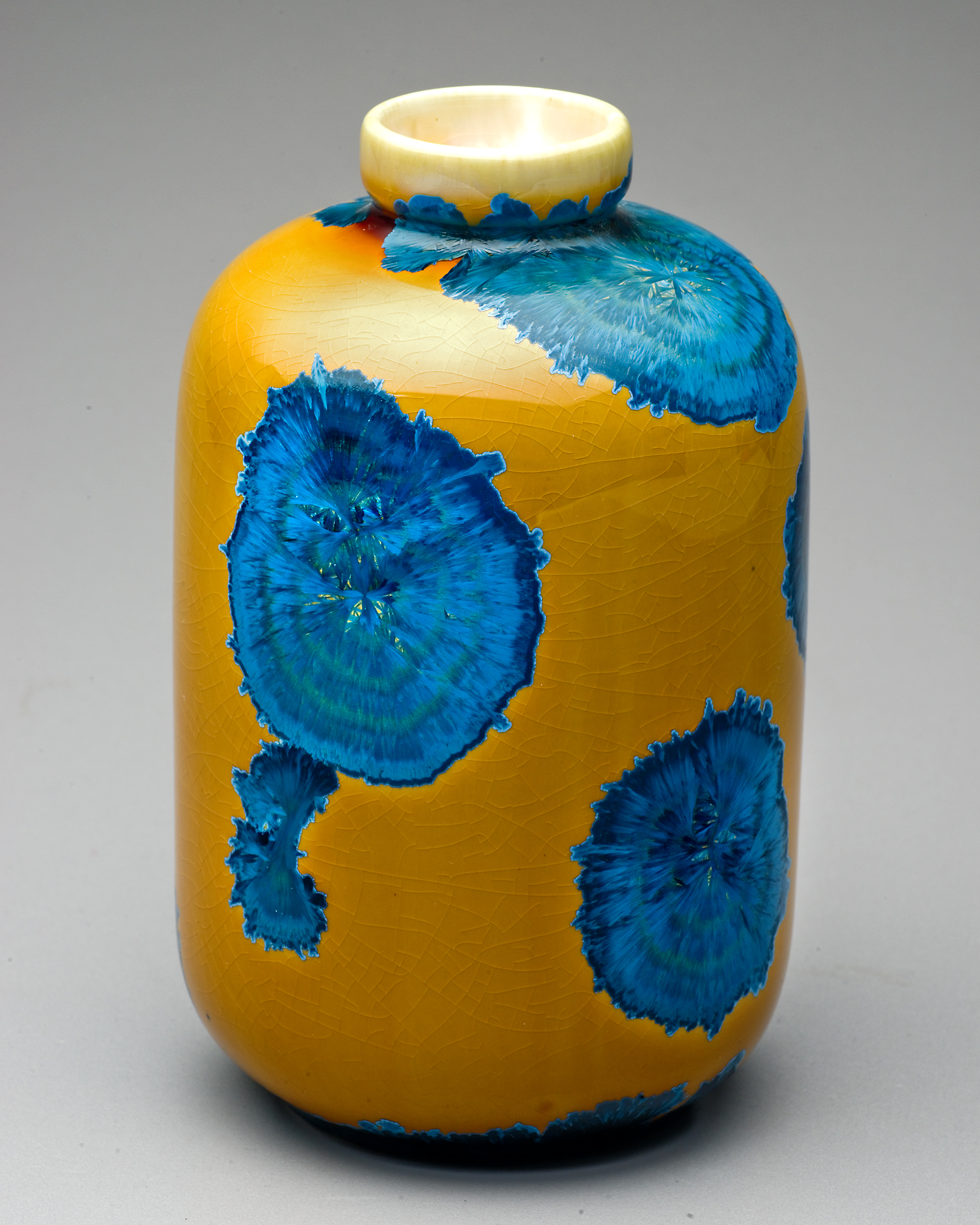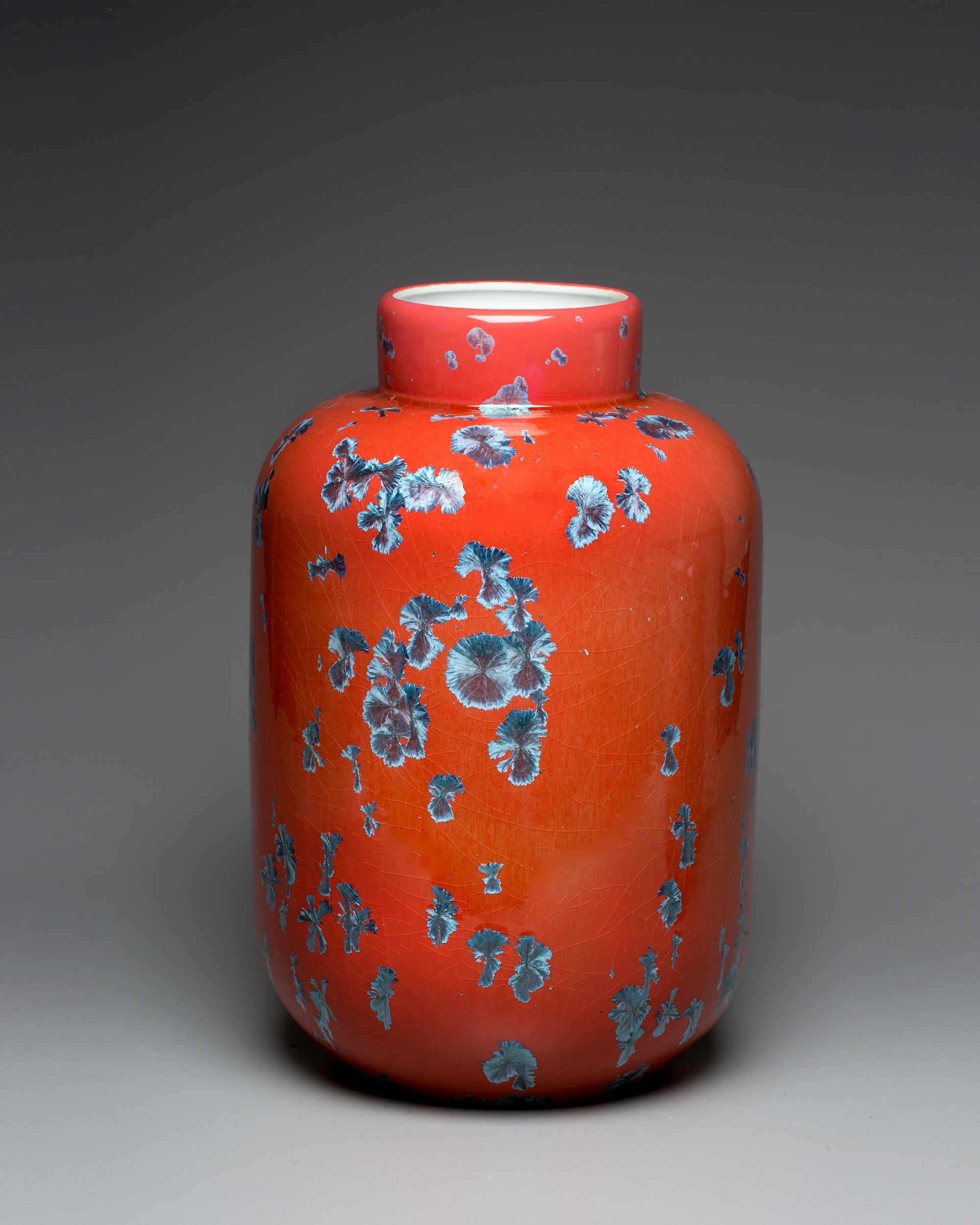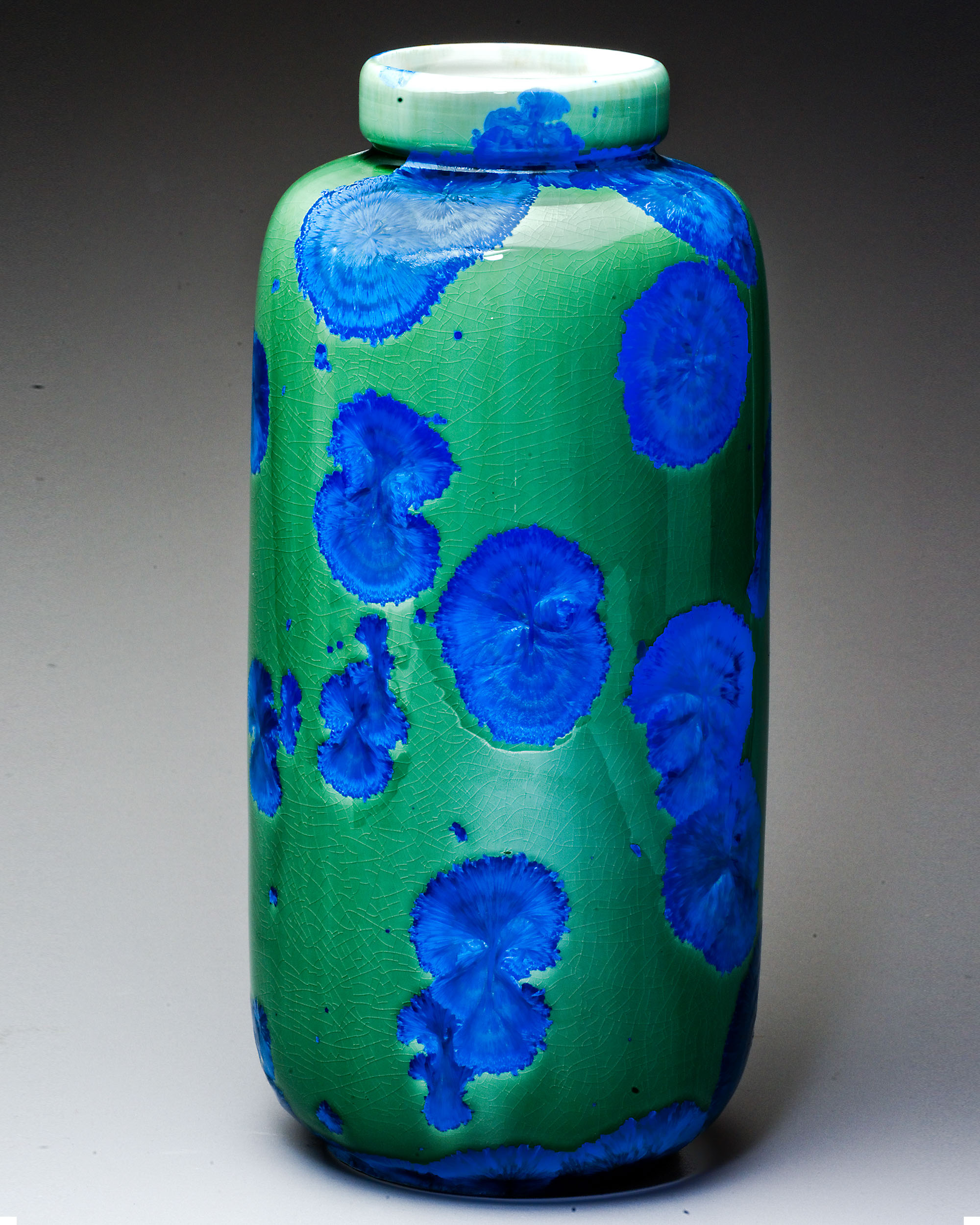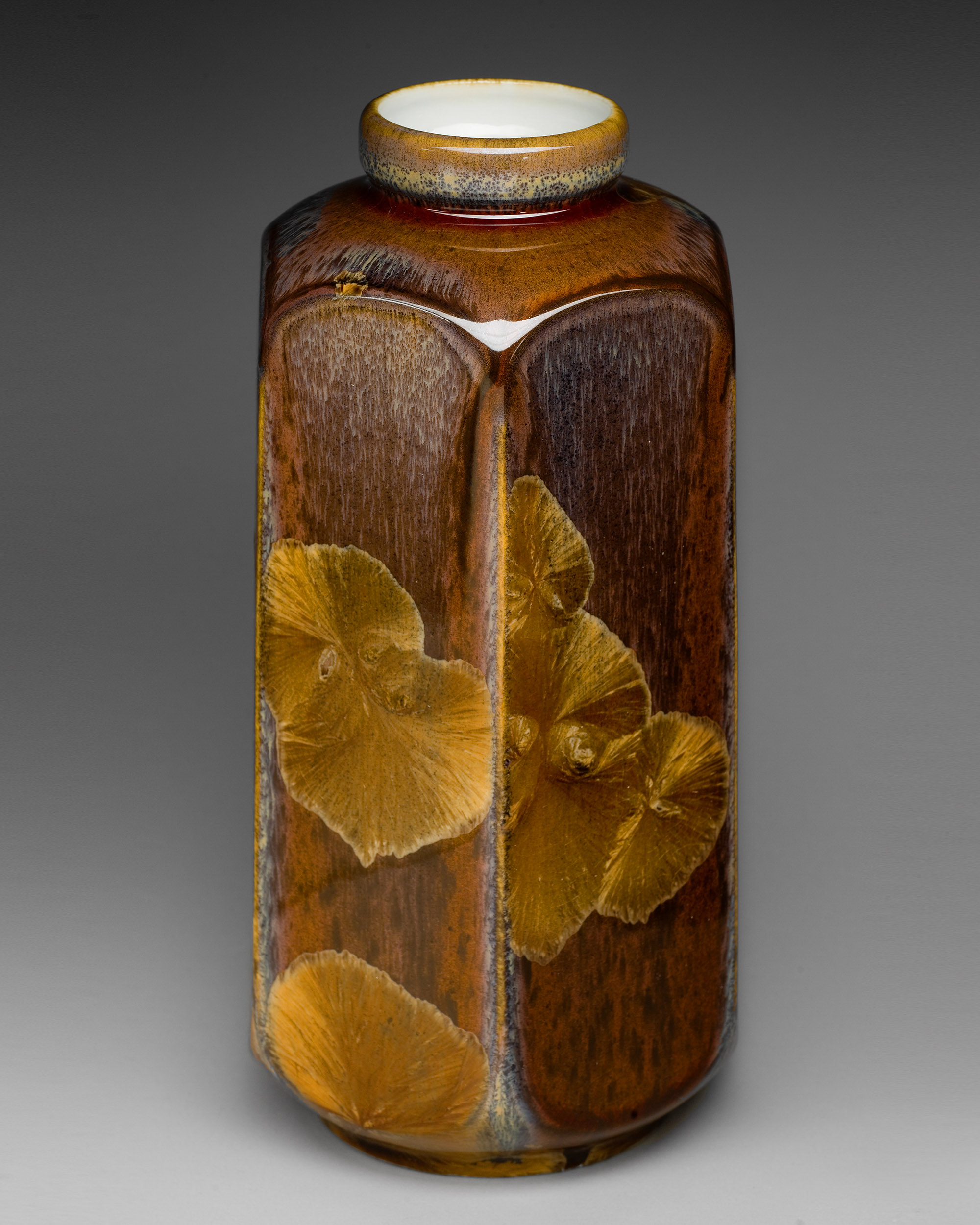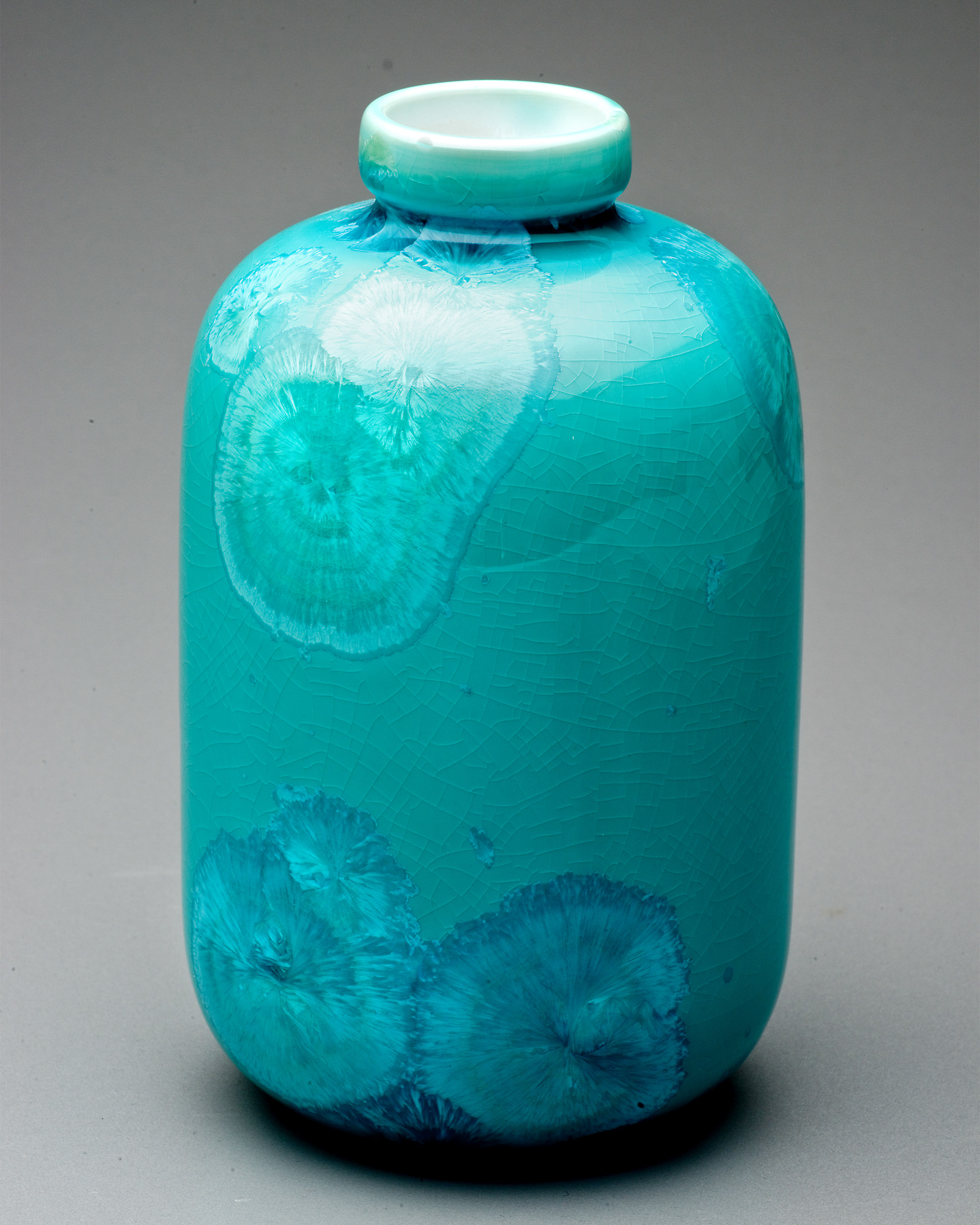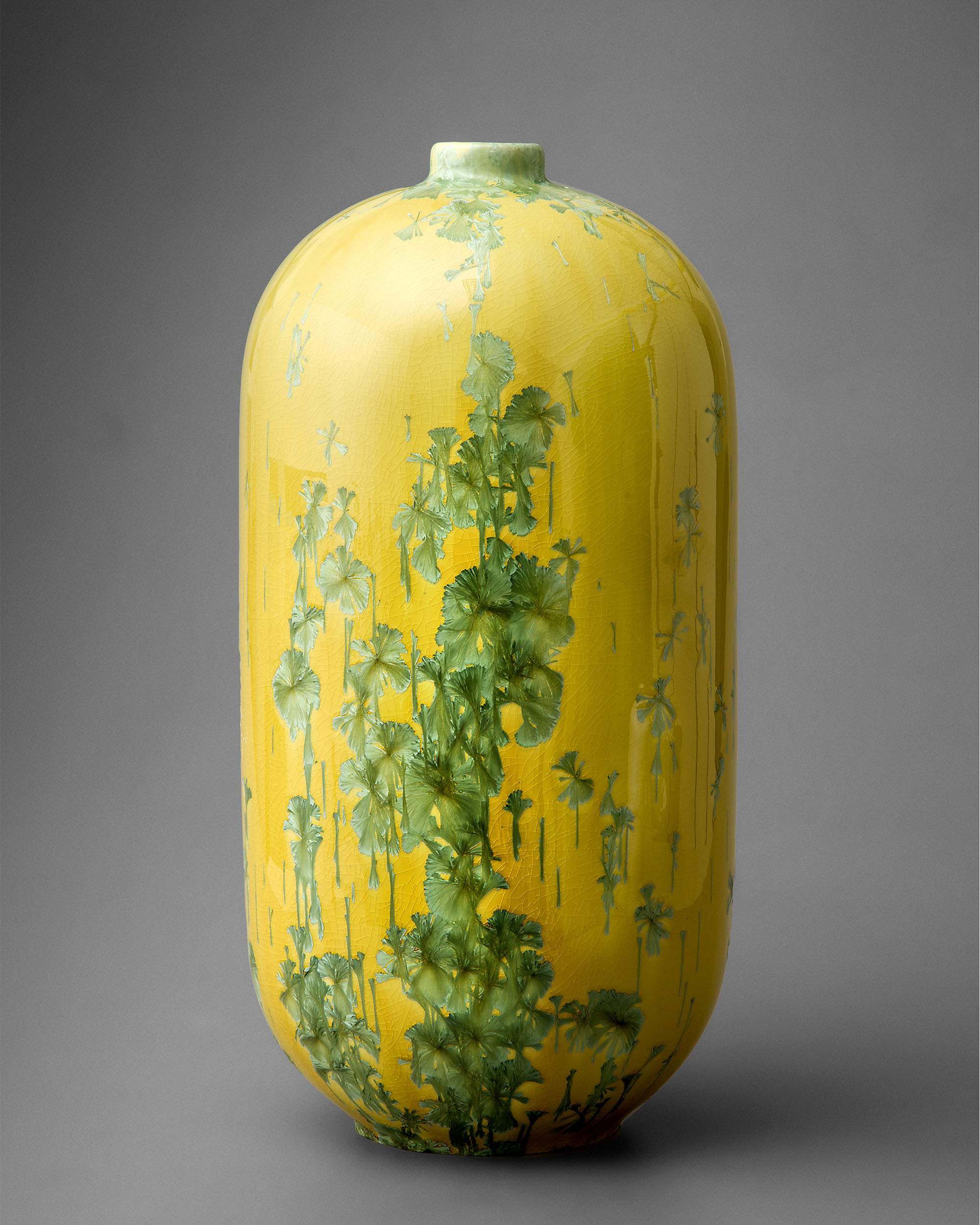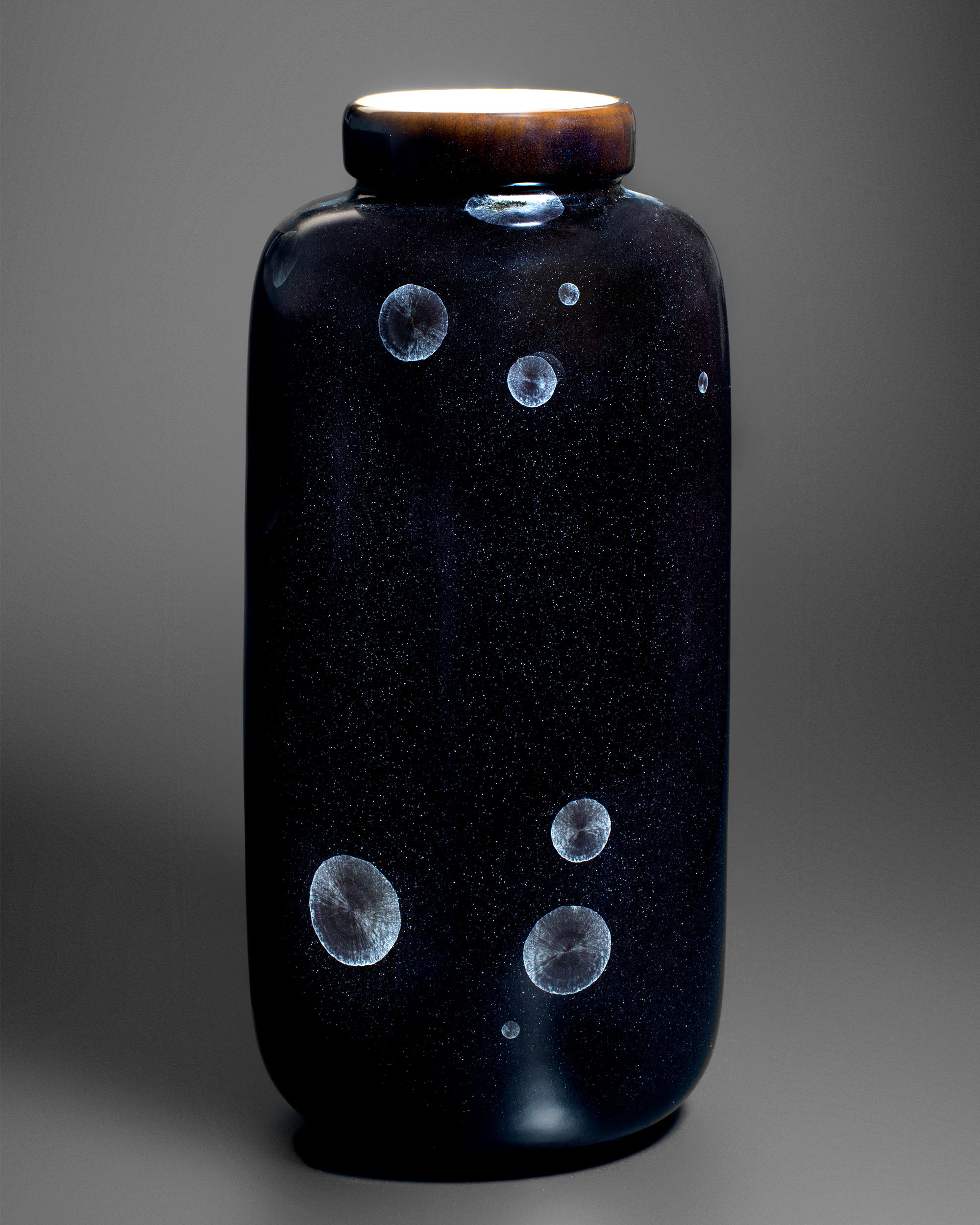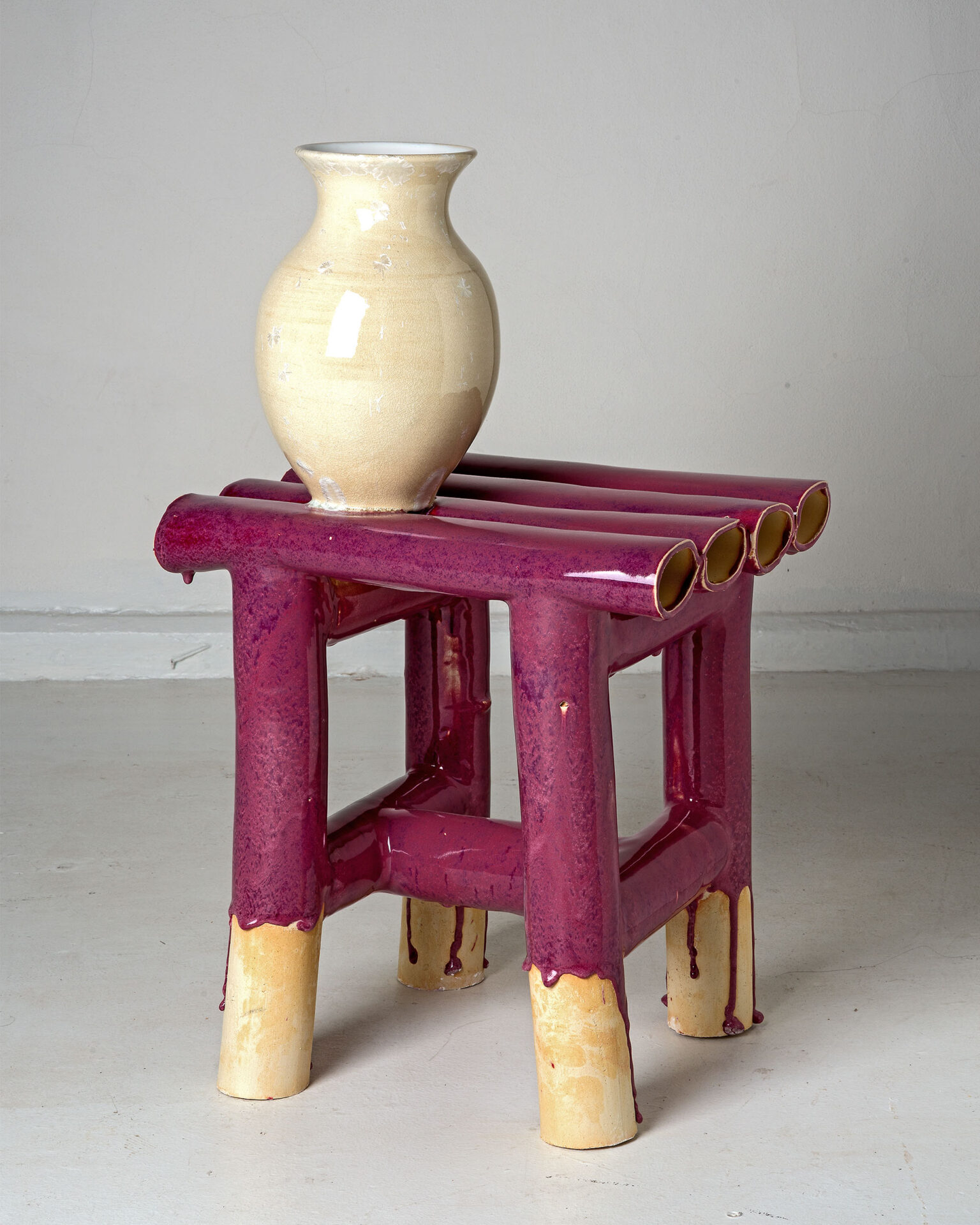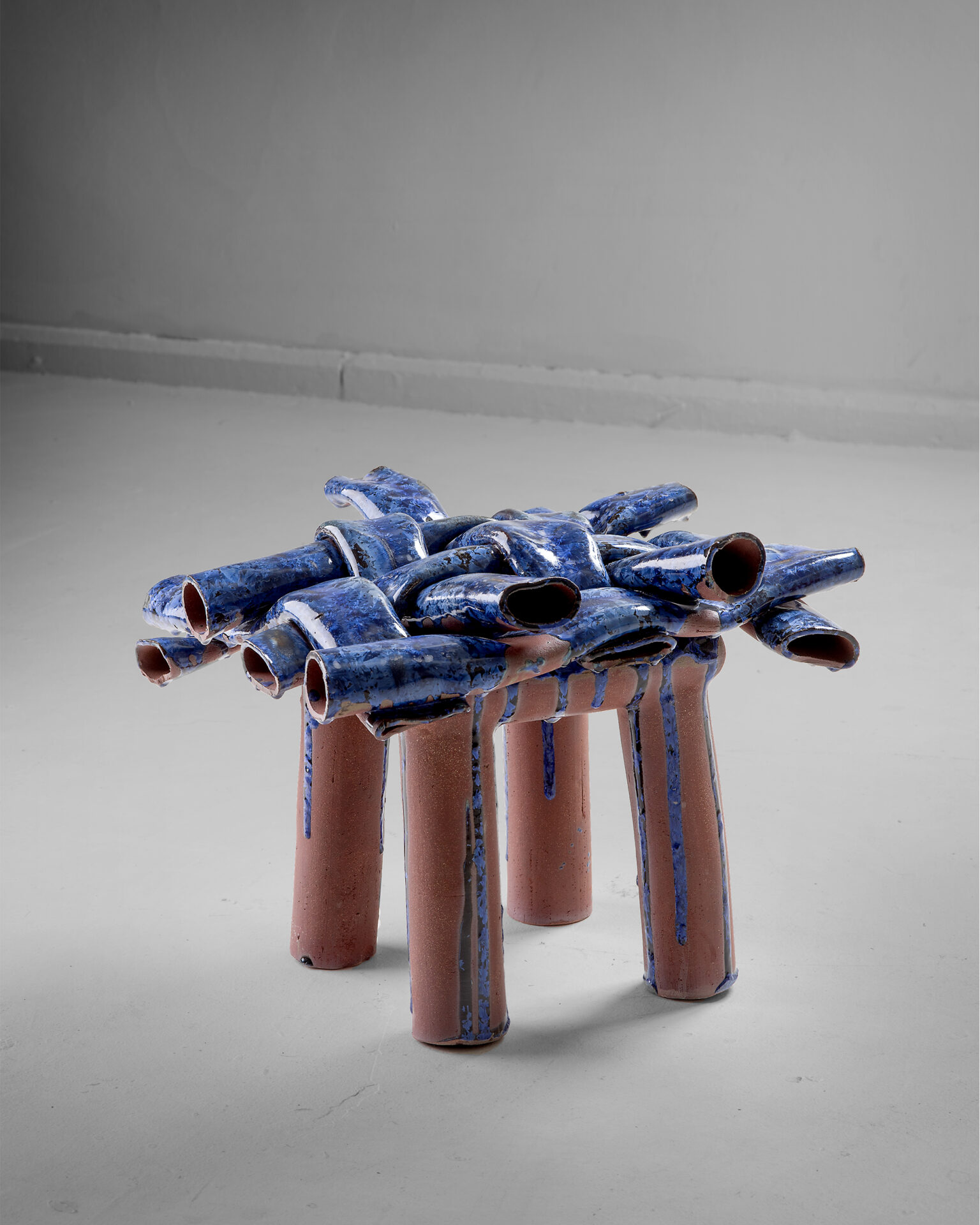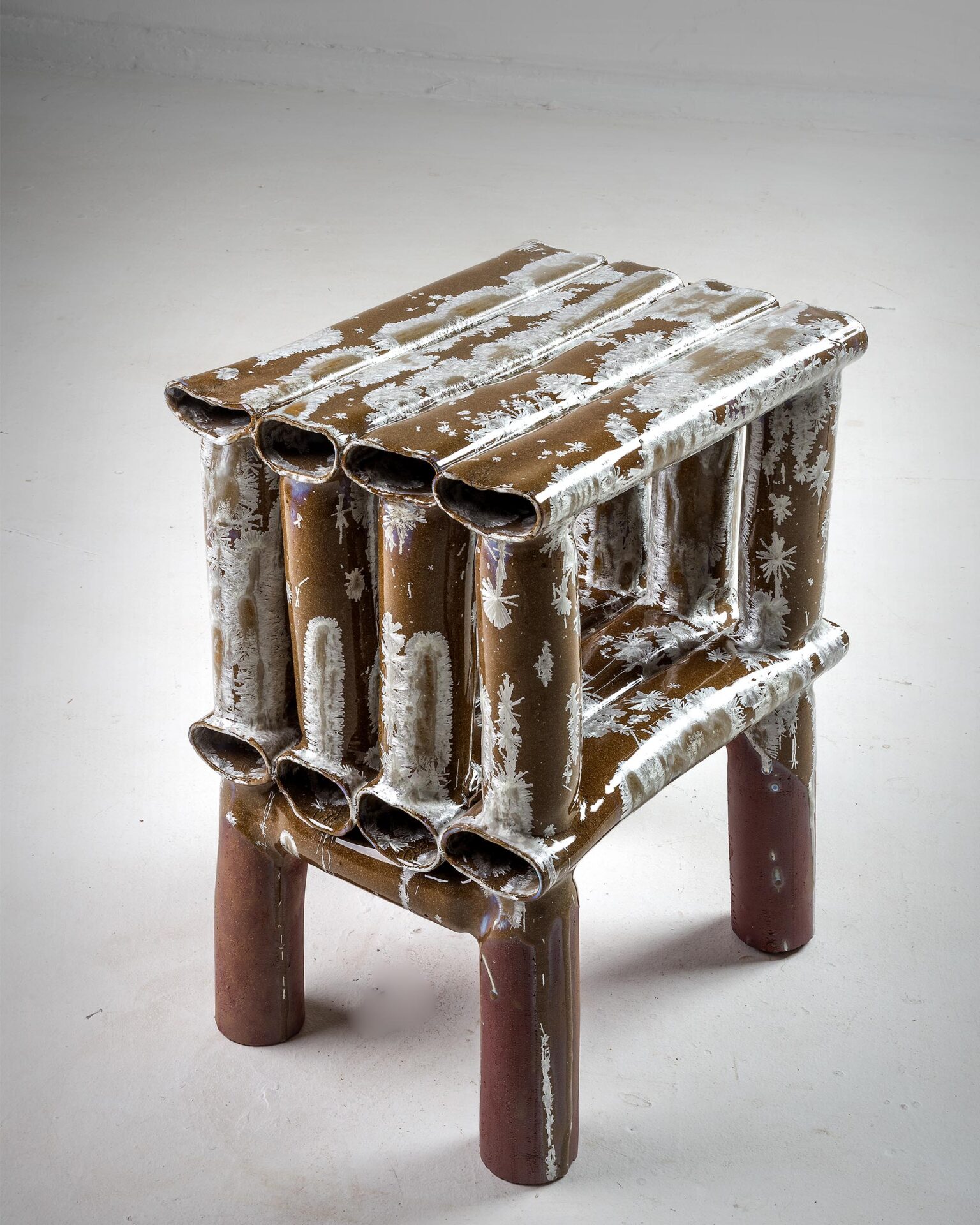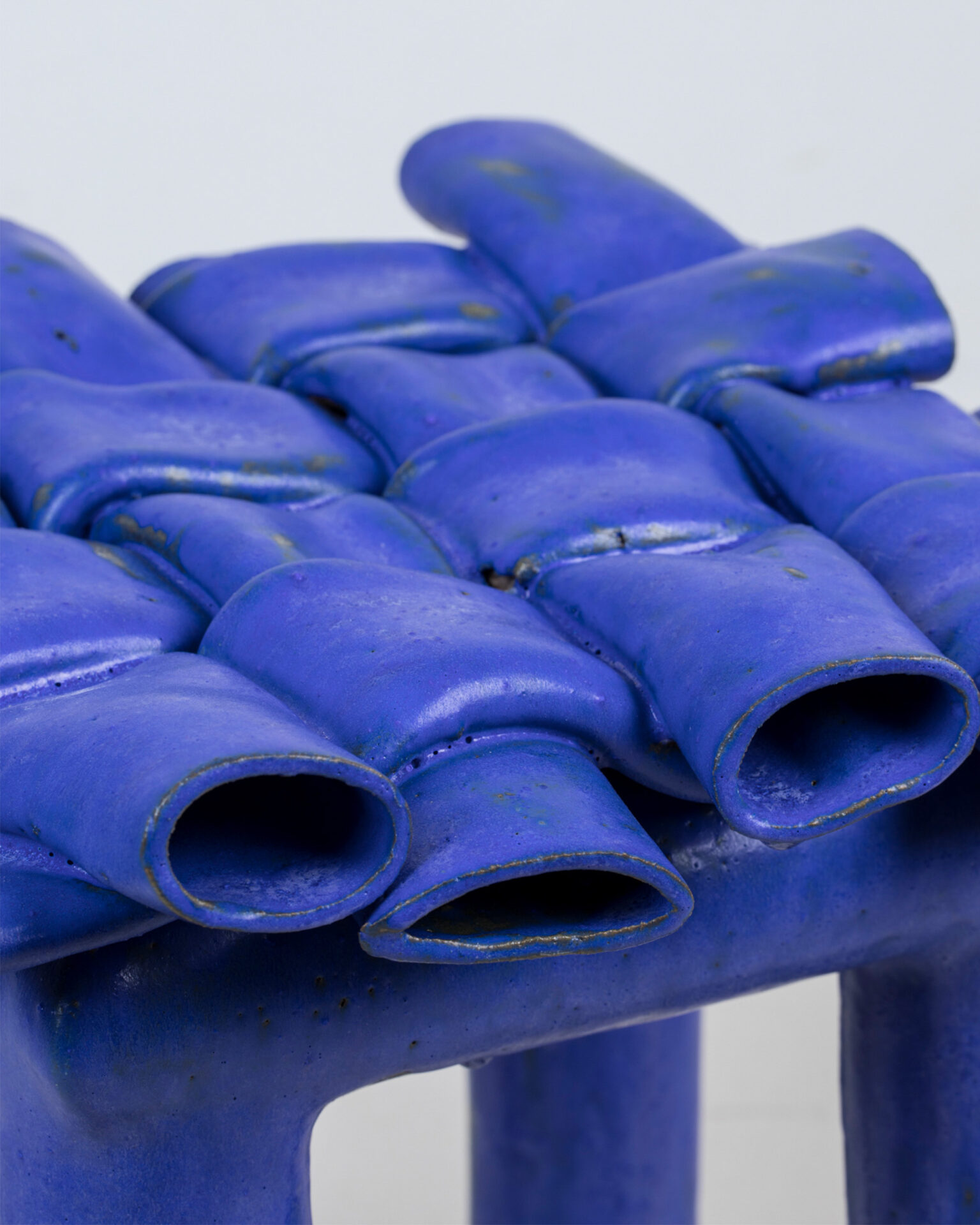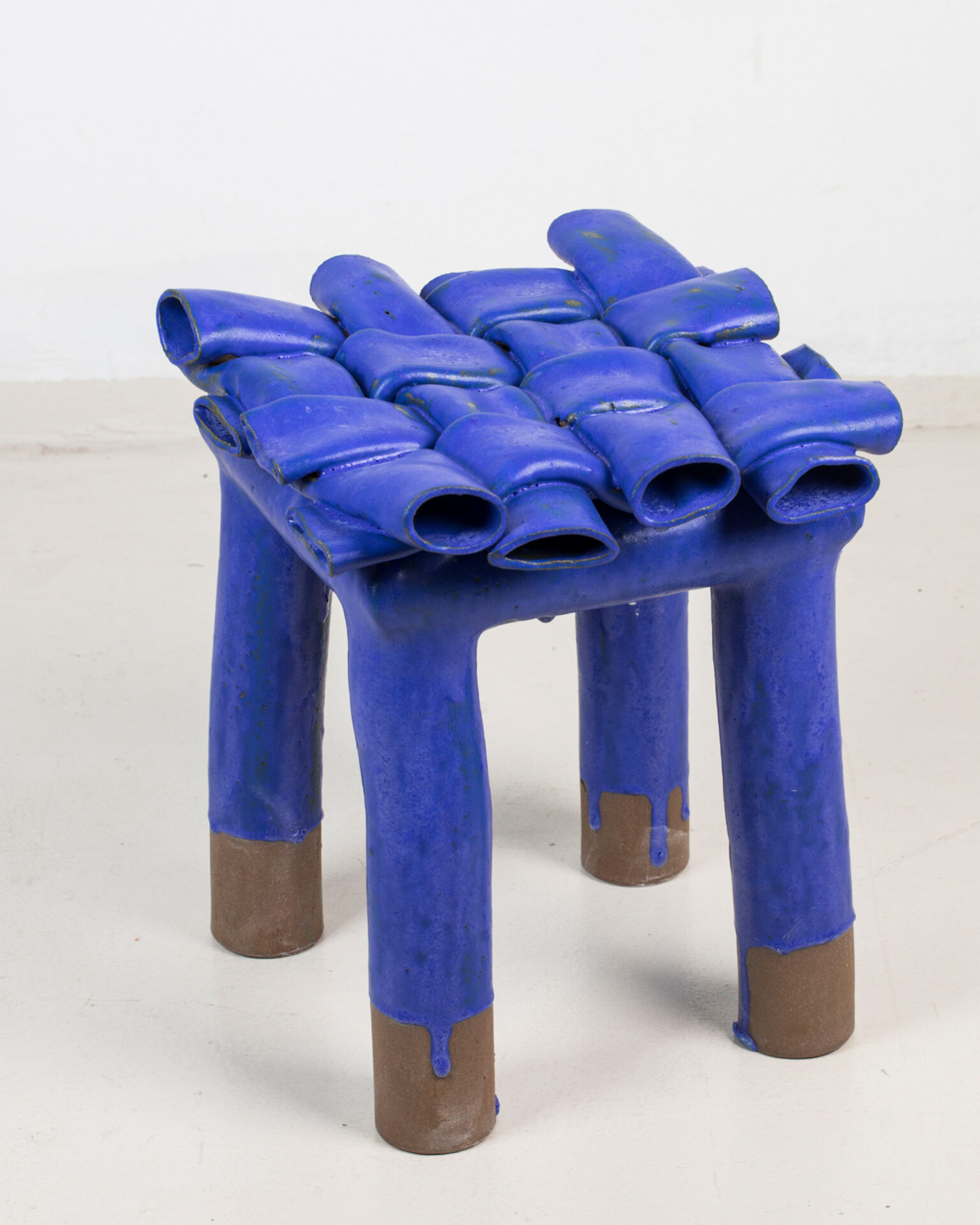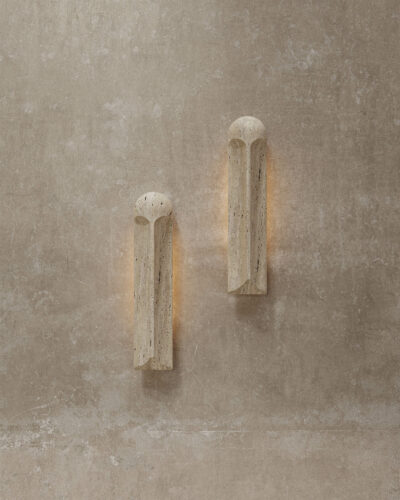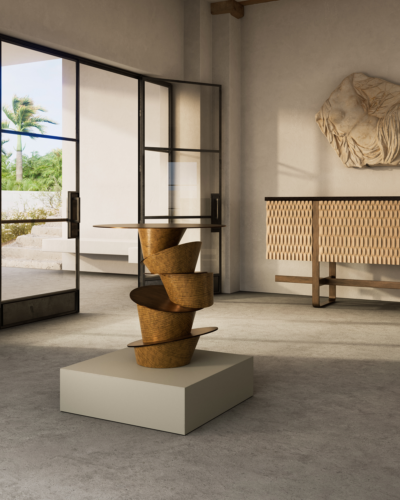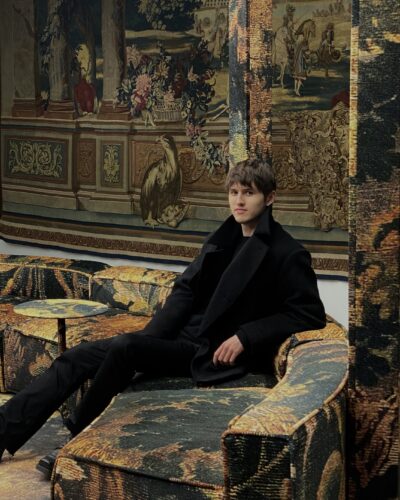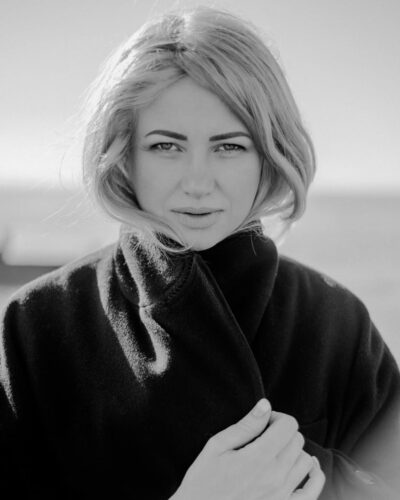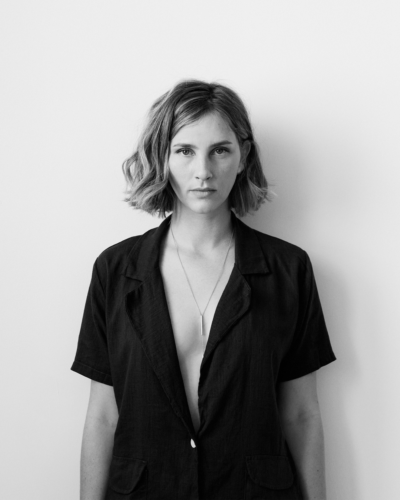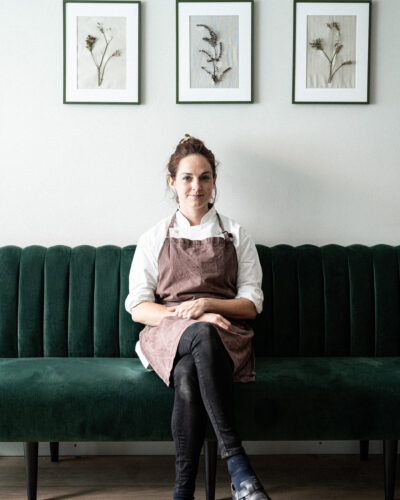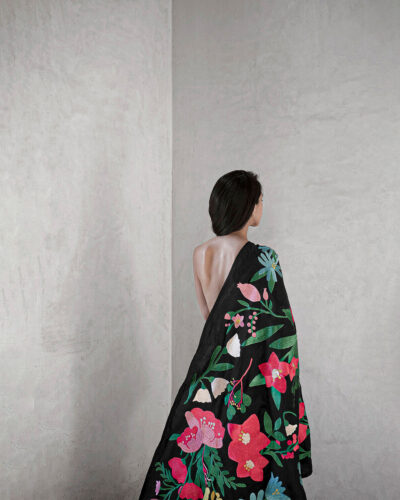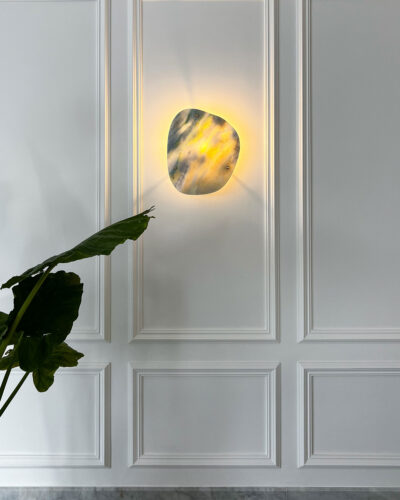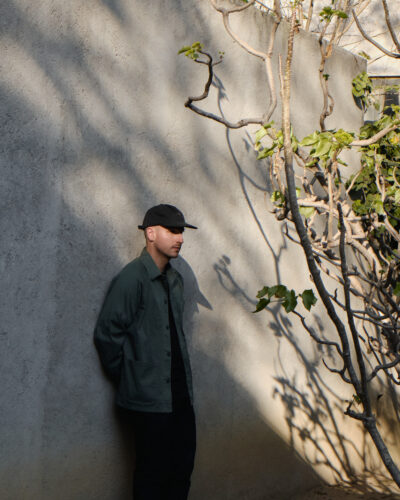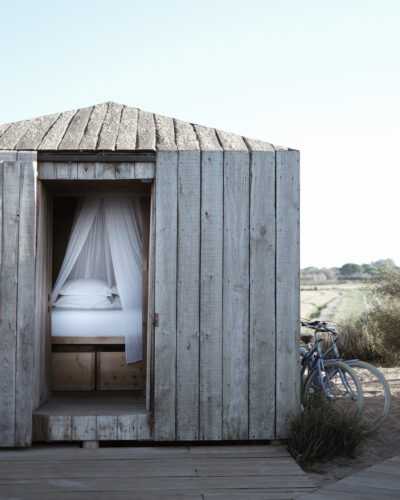This website uses cookies so that we can provide you with the best user experience possible. Cookie information is stored in your browser and performs functions such as recognising you when you return to our website and helping our team to understand which sections of the website you find most interesting and useful.
Listen to the conversation between Rosanna and Milan Pekar.
“I worked a lot with porcelain during my studies – and always in white because we were taught that the high firing temperature of porcelain means that you can’t achieve any colour on it – which is technically true with industrially-made colours and glazes – but, then I discovered crystal glazes,” notes Milan Pekař, the Czech ceramicist whose porcelain vases and vessels now shimmer with abundant, energetic colour.
“I make all of my own glazes, which I mix from raw materials and colour with metal oxides. I’ve been researching this field for 5 or 6 years now, and so I have a good sense of what will happen – what colours [and patterns] I can expect to see when I open the kiln – though there’s still always an element of surprise.” A constant balancing act, Pekař must coerce the individual elements – colour, texture, pattern -to work in harmony with one another, adjusting and readjusting to find new or curious results.
Like the concentric rings that mark the age of a tree or a cluster of cells under the microscope; the leaves of the ginkgo biloba or petrol on water; air bubbles rising to the surface or islands floating upon it – the shapes, textures and forms that Pekař achieves in his crystal glazes are both abstract and figurative, scientific and organic, always changing their scale and meaning upon each new inspection. Whilst pattern and pictorial decoration has been dominant throughout the history of ceramics, Pekař’s ambiguous, non-representational style results in a sense of timelessness – objects that are at once antique and contemporary.
The crystals that develop in the glaze grow in clusters and constellations, quite unlike those in other glazes that are so small as to be rendered invisible. Not only are Pekar’s crystals visible, they are beguiling. Appearing in the heat of the kiln, they refract light to create a glossy, luminescent finish, and the thin, delicate porcelain is imbued with an intriguing sense of depth. “Very often people think that my vases are made of glass, and, in some ways, that’s true because a glaze is basically a very thin layer of glass on the surface of the clay.”
“Starting from a little dot, the crystals grow outward from the centre – growing in the same way as frost on a window in the winter. In fact, it’s the same process – but these crystals grow inside the glaze, so when it cools down they stay locked inside it forever.” The addition of pure oxides creates the kaleidoscopic colour, and in Pekař’s hands, a single ingredient contains many possibilities; nickel oxide, for example, creates a base of warm, rich yellow, and crystals that are electric blue. This double effect is possible thanks to the different structures that are present – “the nickel in the glaze reflects the light differently [depending if it is in the base or in the form of a crystal]. When you think about it, colour is about reflection, it’s not about the surface – this is not a blue or yellow glaze – it’s just that light is made up of different colours, and therefore the different structures produce totally different colours [from the same base ingredient].”
Underneath Pekař’s dazzling textures and patterns are vessels of striking purity, replete with clean lines and classical proportions. Focusing on simplicity and elegance, Pekař’s wild use of colour is tempered by his subtle approach to shape and form. “I use a lot of colour in my glaze, and so I don’t want to have a very busy structure.” Great deliberation, time and thought goes into the vessels themselves, and whilst they do not require the same level of experimental chemistry as the glazes, there is most certainly an alchemy in creating something so refined from such amorphous material as clay or porcelain. “For me, it’s all about the details. It’s good to look back at the history of ceramics because often the shapes are very simple and beautiful – so it’s just about modifying these. It’s the same in every craft or art – you’re just learning from the previous generations [who came before you].”
“I don’t have a favourite period in ceramics – it’s not like Fine Art or Fashion, which change very quickly – ceramics change slowly, they don’t really go out of fashion…”
In addition, or perhaps, in contrast to the finesse of the vases and vessels, Pekař makes contemporary ceramic furniture – functional objects for the home. An opportunity for another form of experimentation and play, these pieces are made in clay, on a bigger scale and with a greater sense of informality. “There’s a lot of chemistry and mould-making in my practice which is very technical and requires a lot of precision. I started to feel that I wanted to go back to working with soft clay – I wanted to make bigger pieces and to really play without worrying about chemicals, firing and mould making.”
“I started making almost without a plan. The pieces are very strong and very heavy – you can sit on it, you can even stand on it – but for me it’s something between sculpture and furniture.” What followed was a collection of knitted ceramics: large, hollow lengths of clay are extruded from a machine before being crudely knitted together, the waft and weft forming the surface of a table, or the seat of a stool. The tubes – somewhat reminiscent of rigatoni – are squashed flat in parts and left voluminous in others, creating a varied, undulating surface that is atypical in both ceramic and furniture design.
Classical architecture is also reimagined in soft clay: Greek columns with lopsided profiles can be used as a seat, stool or plinth – further blurring the distinction between the functional object and sculptural form. Extruded from a custom-made machine, the regularity and perfection of the column is disturbed, and their glazed surfaces come in many colours and textures – some coated with thick, shiny colour, whilst others are dappled and grainy, translucent and thin.
“I do try to be precise, but, often, when you mess up you discover something new”
Whilst Pekař is rigorous and exacting in his methods, his studio is resolutely not a laboratory – rather than a controlled environment, it is a space for experimentation, a place where chance, accident and anomaly are embraced. Meticulous research has emboldened Milan Pekař to push at the limits of his chosen field -and as the old adage goes: you have to know the rules well, so that you can break them effectively.
